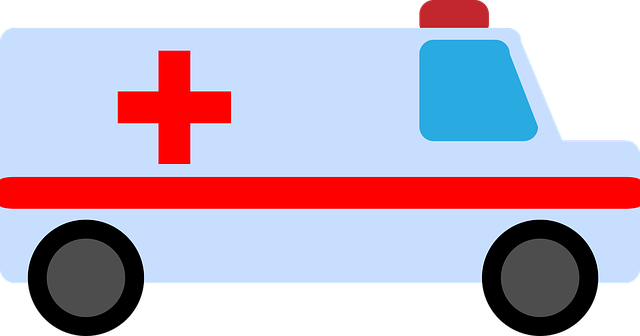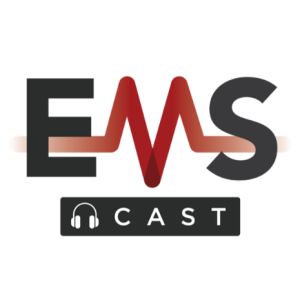

78.5K
Downloads
81
Episodes
Paramedic training is over, you’re in the front seat now. Whether day 1 or day 1,000 you can’t shake the fear you’re underprepared. You were taught to systematically decide if A... do B. But what if “A” wasn’t in the book? The truth is each emergency call is too unique to teach the right response to every situation. We need to go beyond algorithmic thinking and understand deeper principles, the WHY behind the algorithm. When every decision counts you want to rely on a framework that will guide you when things don’t make sense. EMS cast is your resource to build that framework. Through discussions with experts, review of evidence-based best practices, and real-world case studies we teach you one step past what you learned in paramedic school. But all of this advanced education is connected back to the guiding principles that answer the question- “at the end of the day, what actually matters to the patient I have in front of me?” Our mission is to elevate your practice and help you improve patient outcomes in every emergency situation. You may not feel ready, you may not feel like you know enough, but by understanding the guiding principles of emergency medicine you can become an expert EMS clinician. Because what you do matters.
Episodes

Monday Apr 15, 2024
The Critically Burned Patient - Part 1
Monday Apr 15, 2024
Monday Apr 15, 2024
Derek, an experienced clinician in burn care, joins us to delve into the intricacies and challenges of treating burn patients. This discussion provides valuable insights into the unique aspects of burn injuries, the importance of a comprehensive assessment, and the latest trends in burn treatment.
Enter to Win a FREE Pair of Frontline Optics Sunglasses
EMScast15 for 15% Off Frontline Optics Sunglasses
**CORRECTION** In the summary at the end of the episode, the rule of 5's was inappropriately attributed to the pediatric population. Rule of Fives is meant for morbidly obese adults, not for kids. Lund-Browder is great tool for peds of different age ranges, though still doesn’t address body morphology (obese kids).
- Resource- Evaluation and Optimization of the Wallace Rule of Nines for the Estimation of Total Body Surface Area in Obese and Nonobese Populations, The Journal of Emergency Medicine, Volume 65, Issue 4, 2023, Pages e320-e327.
Blog post- The Critically Burned Patient
Key Topics Covered
-
Complexity of Burn Injuries: Derek begins by explaining why burn patients require a unique approach compared to other trauma patients. He highlights the potential for burns to mask other critical injuries, underscoring the necessity of a thorough and trauma-informed initial assessment.
-
The 'Big Three' Considerations: The conversation shifts to what Derek refers to as the "big three" — polytrauma, airway loss, and inhalation injuries — which are crucial early considerations in burn care. He stresses the importance of recognizing these potentially life-threatening conditions alongside the burn injury itself.
-
Fluid Resuscitation: A significant portion of the discussion is dedicated to fluid resuscitation, a critical aspect of burn care. Derek talks about the Parkland formula for calculating fluid needs based on the total body surface area affected by burns but notes that real-time adjustments are often necessary to avoid complications like over-resuscitation.
-
Pain Management and Ethical Concerns: Derek addresses the ethical and practical aspects of pain management in burn victims. Effective pain control not only improves patient comfort but also aids in overall patient management and long term healing, making it a critical component of the initial response.
- Assessment Tools and Techniques: Various assessment tools such as the Rule of Nines and the Palmer Method are discussed. Derek explains their applications and limitations, emphasizing that while these tools are helpful for initial assessments, more detailed evaluations are typically conducted at specialized burn centers. A link from ABA that may be helpful: https://ameriburn.org/resources/burnreferral/ Includes brief overview of severity/depth (with diagrams, not pictures), Rule of Nines & Palmar Method, plus a link for ABA referral criteria.
Here is another great article for a deeper dive into pros & cons of different methods of estimating TBSA, although not exhaustive, per se.
Gretchen C., Burn size estimation: A remarkable history with clinical practice implications,Burns Open, Volume 8, Issue 2, 2024, Pages 47-52, ISSN 2468-9122
- Burn depth estimates: Unfortunately, all of my favorite wound pictures for discussing 1st/2nd/3rd degree (superficial; both superficial & deep varieties of partial-thickness; full-thickness) are copyrighted, etc. There are free diagrams out there, but for actual real wound pictures, very little is open-license. UpToDate has a decent starting place, with four pictures embedded, and likely accessible for most.
Part 2: This is just part 1. Part 2 will be coming May 1st. We will simplify our approach to fluid resuscitation and dive into some nuances of burns and burn care.
Other Scientific papers mentioned-
Burn resuscitation
First article is an overview of evolution of burn fluid resuscitation formulas & philosophy – although again, not exhaustive, per se.
Bacomo, F. K., & Chung, K. K. (2011). A primer on burn resuscitation. Journal of emergencies, trauma, and shock, 4(1), 109–113.
Next article underscores the risks of fluid creep. Starting too high, being reluctant to titrate down, and the fact that giving too much fluid can actually CAUSE an increased need for fluids (vicious cycle).
Chung KK, Wolf SE, Cancio LC, Alvarado R, Jones JA, McCorcle J, King BT, Barillo DJ, Renz EM, Blackbourne LH. Resuscitation of severely burned military casualties: fluid begets more fluid. J Trauma. 2009 Aug;67(2):231-7; discussion 237. doi: 10.1097/TA.0b013e3181ac68cf. PMID: 19667873.
Comments (0)
To leave or reply to comments, please download free Podbean or
No Comments
To leave or reply to comments,
please download free Podbean App.